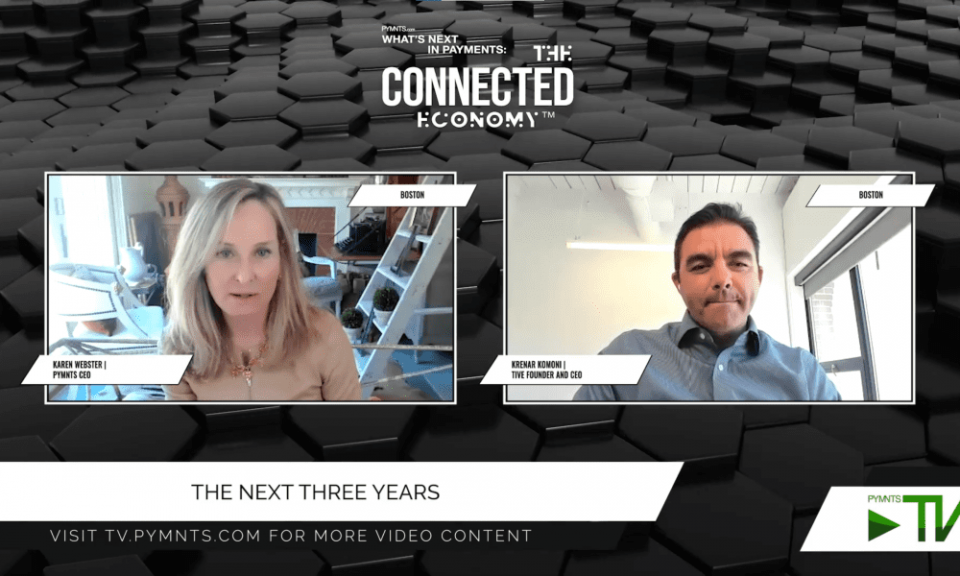The last few years have shone a spotlight on just how badly supply chains are suffering. Ports have been clogged, there’s a truck driver shortage and the pandemic continues to wreak havoc on labor availability.
Those frictions have led to many unhappy surprises. Merchants have seen their (virtual and brick-and-mortar) shelves laid a bit bare; consumers don’t get what they need or want.
In an interview with Karen Webster, Krenar Komoni, CEO of supply chain provider and platform Tive, said that real-time tracking and visibility of goods in transit — from the manufacturer’s warehouse all the way through to final delivery — is critical in helping supply chains become more efficient.
That visibility is often lacking. Simply knowing the location of shipments and the condition of what’s riding in the back of a truck can be a challenge, and it’s not just a pandemic-related issue.
Komoni said Tive’s mission to build a centralized platform that brings real-time insight to where goods are traces its genesis to his family. His father-in-law ran a trucking firm in New England and was constantly engaged in trying to track the who, what, where and when of logistics.
“Every time I would be at the house, he would be on the phone trying to figure out where some driver was,” said Komoni. Details where always hard to pin down, tied to a never-ending game of phone tag.
Komoni’s own background in engineering and chip design led him to leverage advanced technologies to track the trucks with disposable GPS trackers.
See also: White House: COVID-19 Pandemic Will End Before Supply Chain Woes
Monitoring the Cargo Environment
But more recently, there’s been a need to monitor the environment within those trucks — light, humidity and temperature.
Those variables are critical in ensuring that produce gets to a warehouse or grocer without spoilage, or pharmaceuticals are undamaged. The company’s trackers and beacons, loaded in cargo holds and on pallets, transmit shipment data in real time across various freight modes, from road to rail.
Tive’s apps address possible delays before they wind up resulting in stockouts, or worse, spoiled items that once unloaded are simply unusable. Spoilage or rejections by retailers in turn can boost carriers’ insurance claims and administrative headaches.
Those features, centralized across the platform, take the trackers well beyond the status of “dumb” devices. Coupled with the cloud, sensors can give visibility into what’s happening across a supply chain at any moment of contact and handoff, from end to end.
Tive’s in-house response teams work with shippers and logistics service providers (70% and 30% of the company’s more than 300 clients, respectively) to alert them of issues throughout the journey. For instance, several pallets of hypothetical berries loaded on a truck should be well-refrigerated. But if the internal temperature of the cargo goes above 40 degrees Fahrenheit, the produce is at risk.
Monitoring the situation in real time lets Tive alert the driver to pull over, check the temperature, adjust the settings and save the berries. With the sensors on board, he likened the process to the consumers’ ability to track their Amazon deliveries.
“And as a result, they know where that shipment is, and exactly what the condition of the shipment is,” he said.
The company received a $54 million capital raise and will use the funds to open new markets, beef up staffing, develop IP that can extend sensors’ battery life and enhance technologies that streamline communications between shippers and carriers.
“Two or three years from now, if you’re in supply chain logistics, you want to know where your shipments are,” he told Webster. “I want these firms to think the name ‘Tive.’”
Read more: Tive Picks Up $54M to Advance Supply Chain, Logistics


